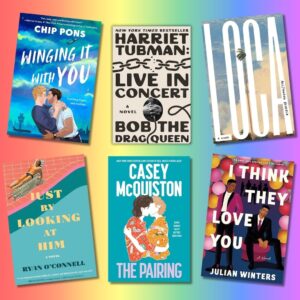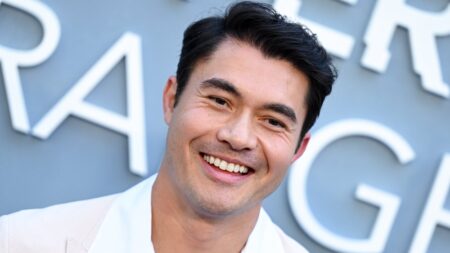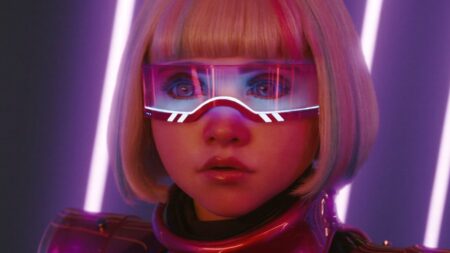Joseph Kosinski had one instruction for the sound team behind his latest feature “F1”: It needed to be as immersive as possible, and he wanted the audience to feel like they were in the car.
Except, no movie had ever really recorded the authentic sounds of Formula 1. Re-recording mixer Juan Peralta explains, “Formula 1 has been so tied up in rights, so there’s never a movie made about it. Being in the car, in a theatrical environment, especially the F1 car, is a new thing. We’ve seen other racing movies with other types of cars. Joseph wanted to feel like we were at the races. He wanted to feel the speed, basically. So that was our biggest challenge with the effects was, anytime we’re on that car or in that car with that point of view, that you feel it, and you feel the speed of it.”
The Apple Original Film stars Brad Pitt as former Formula 1 race car driver Sonny Hayes, a retired driver. Javier Bardem plays Ruben, the boss of an underdog racing team who convinces Sonny to return to the sport to partner with and mentor rookie driver Joshua Pearce (Damson Idris). The film picks up halfway through the Formula 1 season, and by bringing Sonny into the mix, Ruben hopes the team lands a podium finish.
To capture the sounds of the cars, supervising sound editor Al Nelson says production sound mixer Gareth John began by strategically placing mics in Formula 2 cars that Pitt and Idris were driving. Nelson says that although they got some great sounds, the team knew those sounds would eventually need to be replaced with proper F1 material. “It was a great introduction to figure out how to mic these cars because it’s they’re so loud.”
Production worked with Mercedes AMG, the Formula 1 team and their engineers to build real race cars that could carry the film’s camera equipment — recorders and transmitters. Pitt and Damson were driving real cars on real Formula 1 tracks. With that, Nelson explains, “Gareth was using very specific DPA microphones similar to what they use in the actual F1 races. From there, we were able to get microphones on the cars, around the track and get all the various turns so that it could be as authentic as possible.”
Working with mechanics, John reveals the microphone packs were held with cable ties. “They put them as near to the exhaust, with as much risk as you’re willing to take with your equipment. We were trying air ducts and just the best places where we could really catch some full-fat sound and immerse the audience in the world.”
Aside from capturing the sound of the cars and turns, the environment, atmosphere and crowds were just as important.
The film works its way across the Formula 1 global circuit from Silverstone to Las Vegas, ending in Abu Dhabi. Every track needed to have its own personality and character.
When the drivers reach Las Vegas, supervising sound editor Gwen Whittle noticed that the crowds there were a largely non-English speaking audience, especially on the main grandstand. “Every other language was Spanish, Italian, or French. You heard everything. I think maybe because it’s a little bit newer to the United States, so it was just the fans traveling to all these races.”
In contrast, Whittle noticed the workers in the pit lane didn’t talk. “You’d think they’d all be talking because they’re going so fast there. But those pit people are ninjas. They don’t say anything. They do their thing in two seconds, and then it’s go.”

The team also spent a lot of time at the home of the British Grand Prix, Silverstone in Northamptonshire, England. The Apex racing team’s garage was built there, and a lot of the track work was recorded there, too. John says, “We were based there for a lot of our track work. And then we recorded two grand prixs there, in 2023 and 2024. We were there for ages. We had mics all around the track.”
Kosinski could only shoot before an actual race, which meant the production rolled between practice and qualifying races. Around 30 cameras were ready to roll and capture high-speed action as Pitt and Idris got behind the wheel.
John recalls that during one sequence, Red Bull racer Max Verstappen crashed into McLaren driver Oscar Piastri. “All the authentic chaos is happening in front of us in real time. Many of the things that happen in this film have happened for real, and they’re pilfered from actual F1 events. When you see Sergio Pérez get bumped off in Mexico, that’s actual footage. It’s more exciting that events of F1 have been integrated into our film.”
In addition to capturing the sound of the cars and environment, Hans Zimmer’s electrifying score needed to be worked in. Re-recording mixer Gary Rizzo says they had to navigate Zimmer’s arrangement. “We were always seeking to find the best elements and the best parts of the orchestration and the best parts of the arrangement, to complement and to focus on the speed of the vehicles, while maintaining the adrenaline and the emotional momentum.”
That’s real-life F1 commentators Martin Brundle and David Croft that can be heard. Whittle says it took many sessions on ADR to nail everything. “One of the bigger challenges in the editing was how much information do you need to give to the people who don’t know anything? And then you have the people who’ve been watching F1 since the beginning of time. So it was a real balance of how much you explain through those guys. They would just watch the race as it was cut, and they would ad lib the whole thing. They were brilliant and hilarious.”
The toughest sequence to mix was Silversone because there was no music in that sequence. Hungary had music, and the sounds of Las Vegas shifted to be more insular to Sonny’s thoughts. Abu Dhabi had music and cars and was elevated. “There’s no music in Silverstone; it was trying to keep that energy up just with sound effects,” says Peralta.
Read the full article here








